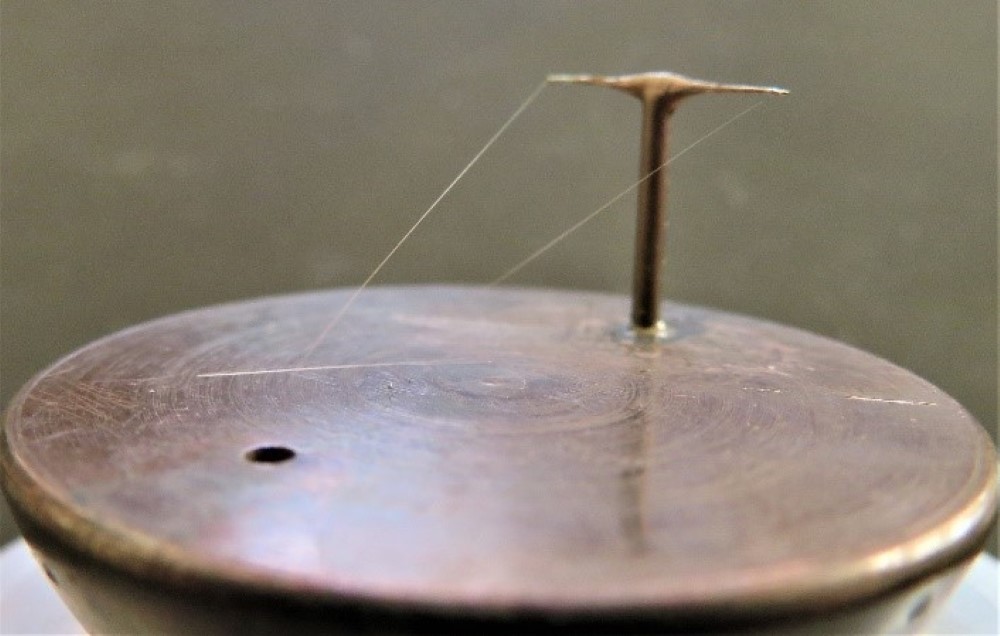
The huge improvements in electronics and instrumentation since the mid-1940s have often led researchers to overlook many of the ingenious and delicate pieces of apparatus developed in the early days of nuclear physics. At Chalk River, one of the people who led the development of these instruments was Hugh Carmichael.
Dr. H. Carmichael had worked with W.B. Lewis at Cambridge and was one of the many physicists who arrived at Chalk River via the Montreal lab. He had already a recognized expertise in quartz fibers before his arrival, and had published a paper on their use in an ultra-delicate instrument described in the Proceedings of the Physical Society in 1934.
At Chalk River, Carmichael set his sights on producing sensitive and highly-accurate electroscopes for measuring radiation. The principle behind these was the change in deflection of a thin quartz fiber as the radiation reduced the voltage on a chamber. There were a series of these electroscopes developed and they were put into production by the National Research Council (NRC) as well as under licence by the famous Hilger and Watts instrument company in the United Kingdom.
The Canadian Nuclear Heritage Museum (CNHM) had a number of these instruments donated to them from the Estate of Bob MacLanders. One was partially disassembled in an attempt to more fully understand its workings and it was discovered that the 0.6 micrometre quartz fibers used were still intact more than 75 years after the electroscope had been manufactured.
Another instrument Carmichael set his sights on building was an ultrasensitive microbalance. Based on earlier designs he designed a new instrument using thin, fused silica fibers that allowed the measurements of quantities as small as one microgram to an accuracy of 1%. Twelve of these instruments were manufactured by the NRC and sent to various laboratories, and a Mark II version was again developed by the Watts section of Hilger and Watts in England.
Bernie Harvey used the Carmichel microbalance at Chalk River in 1951 to measure the alpha half-life of the recently-discovered isotope Am-241. To do this he accurately measured the actual weight of 1 and 6 microgram samples of americium oxide and then measured the number of alpha decays in a proportional counter. The value of 470 years he obtained for the half-life remained the accepted value for many years.
While the CNHM has not succeeded in acquiring one of the Carmichael microbalances, the Canadian Science and Technology Museum in Ottawa does have one (artifact 1996.0198) and the legacy of Hugh Carmicheal, who later applied his talents very successfully to cosmic ray research, will long be remembered.
